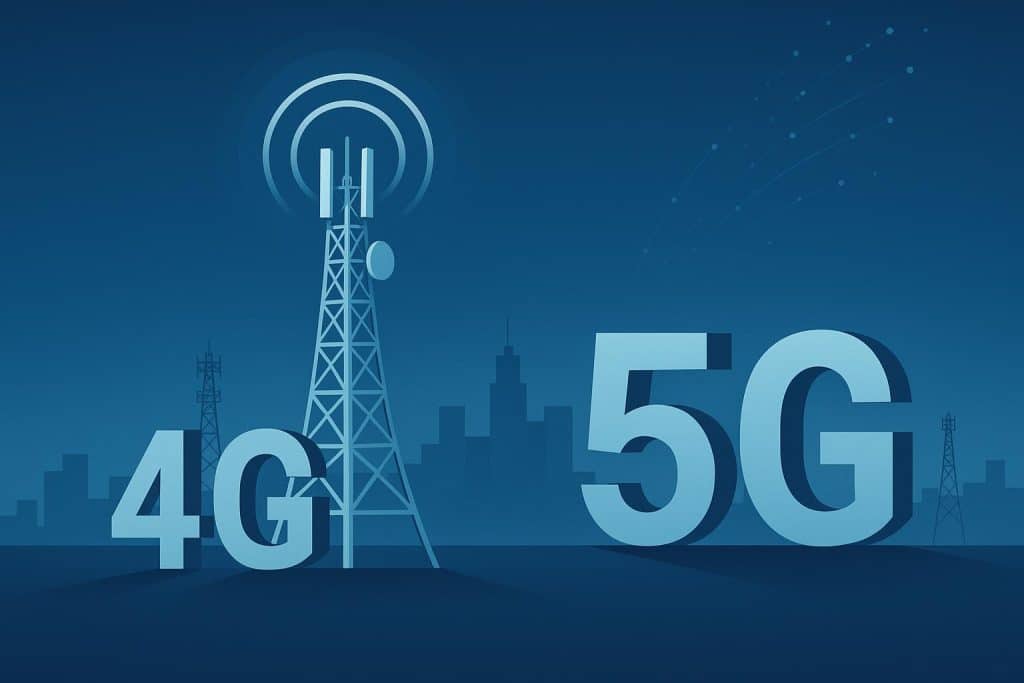Michael Henry DOD is a career communications leader and CEO of Industrial Communications Group (ICG), LLC, where since 2018 he has overseen personnel, systems and data integration, and enterprise strategy for integrated global communications solutions. Drawing on nearly three decades as a U.S. Army communications officer and his 2007–2023 tenure as a Department of Defense technical director in Suffolk, Virginia, he helps partners deploy secure, data-driven 4G/5G and next-generation networks that maximize operational efficiency and ROI. His work supporting SOCOM and general-purpose forces—along with experience in oil and gas and private 4G/5G—underscores his credibility in mission-critical connectivity. He holds an MBA from Embry Riddle University and a BA in economics from UC Davis, and has been recognized with the Defense Superior Service Medal and the Defense Meritorious Service Medal.
Companies define mobile networking advances in generations, with the current transformation featuring a shift from 4G to 5G. As with all forms of cellular connectivity, 4G platforms rely on radio systems, where a base station emits radio frequency signals to connect networks with 4G-capable devices.
With speeds of up to 100 Mbps, 4G supports a wide range of high-bandwidth applications, including video conferencing and high-definition streaming. It enables remote work and reliable systems connectivity across geographies. It also addresses issues involving network capacity, data transmission speed, and spectral efficiency.
The 4G uses an LTE wireless broadband standard, which employs an IP-based communication protocol for all types of traffic. It also uses orthogonal frequency-division multiple access (OFDMA) and carrier aggregation strategies to accommodate the diverse needs of various devices, enabling them to share the available bandwidth simultaneously.
Mobile network operators continue to maintain 4G networks, which accommodate legacy network standards and ensure device interoperability. However, a December 2024 report by 5G Americas states that 5G usage in 2025 will surpass 4G connections across North America, although the 4G standard will remain dominant worldwide.
The 5G systems also rely on cell towers that use radio waves, but employ a broader radio frequency range. They also use network slicing and other strategies to deliver faster speeds and capacity. Network slicing involves operating multiple logical networks in a shared and unified physical network infrastructure.
The slices are self-contained, secure, and independent networks, with each configured to meet specific user needs or provide particular services, tailored to acceptable ranges of latency, speed, and reliability. This approach furthers commercialization aims, with enterprise and consumer segments accessing purpose-built network experiences tailored to their specific plans.
Another 5G capability is operating on millimeter wave (mmWave), a new high-frequency spectrum. Unlike 4G LTE’s wavelengths, which are less than 6 GHz, mmWave wavelengths range from 30 GHz to 300 GHz, significantly increasing download speeds from 20 Mbps to 100 Mbps on 4G, to 1 Gbps to 3 Gbps. The maximum 5G download speeds are actually in the much higher 10 Gbps to 20 Gbps range under ideal conditions. Generally, optimized 5G networks operate 100 times faster than their 4G counterparts.
This high-band 5G wavelength change has necessitated the installation of new small-cell base stations, which are typically around the size of a pizza box. One limiting factor is that mmWave signals are weak and travel relatively short distances, requiring more small-cell stations than 4G. Use cases of 5G include industries where high-density, low-latency, real-time communication is essential, such as manufacturing, autonomous vehicles, and health care.
The Pentagon’s FutureG office is currently seeking to equip war fighters with 5G communication, with the Beyond 5G program looking to future communications through applied research projects. One such effort centers on unlimited software-defined radio, which will enable the use of the entire radio wave spectrum (any waveform), providing flexibility since war fighters will connect via any communications channel.
This “beyond 5G” approach relies on hyper-dimensional software-defined networks, which optimize wireless network operations autonomously. The technology essentially understands what all system components need to do to connect, despite radically different levels of physical network access. Non-terrestrial networks, such as airborne platforms and satellite constellations, are essential in delivering war fighters’ instant, secure, and ubiquitous communications, even in austere, limited-connection environments.

